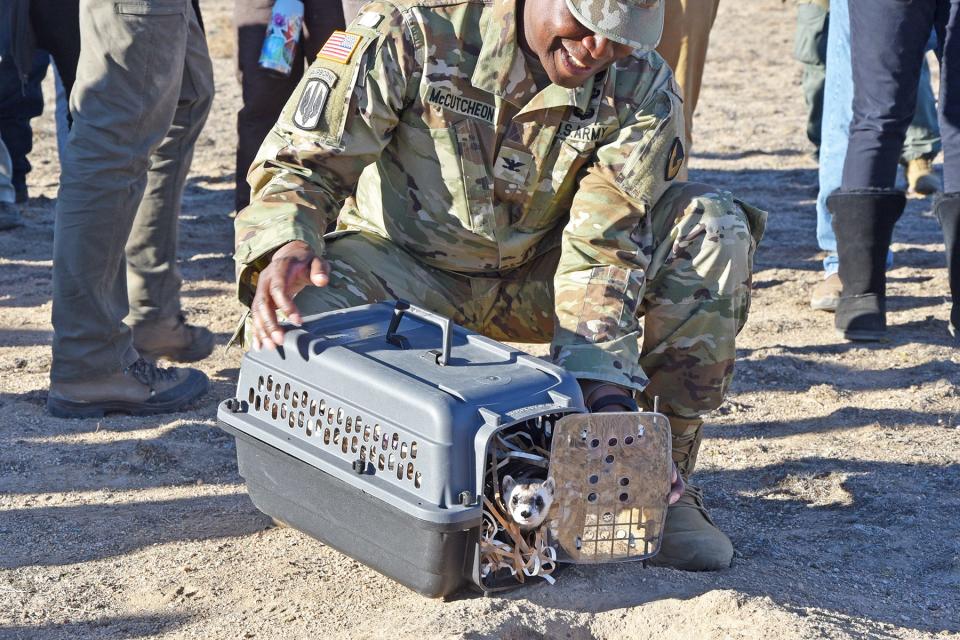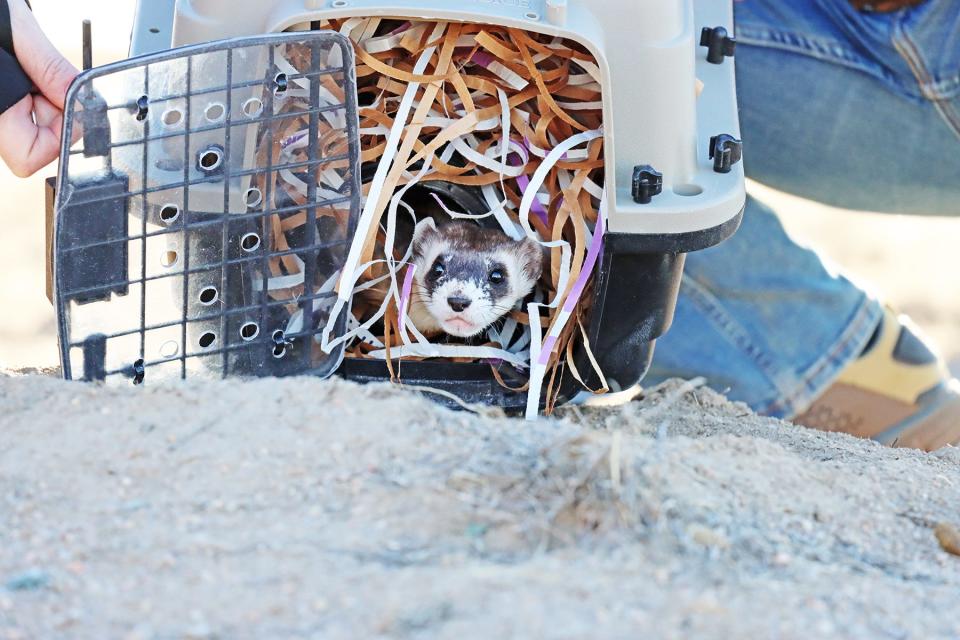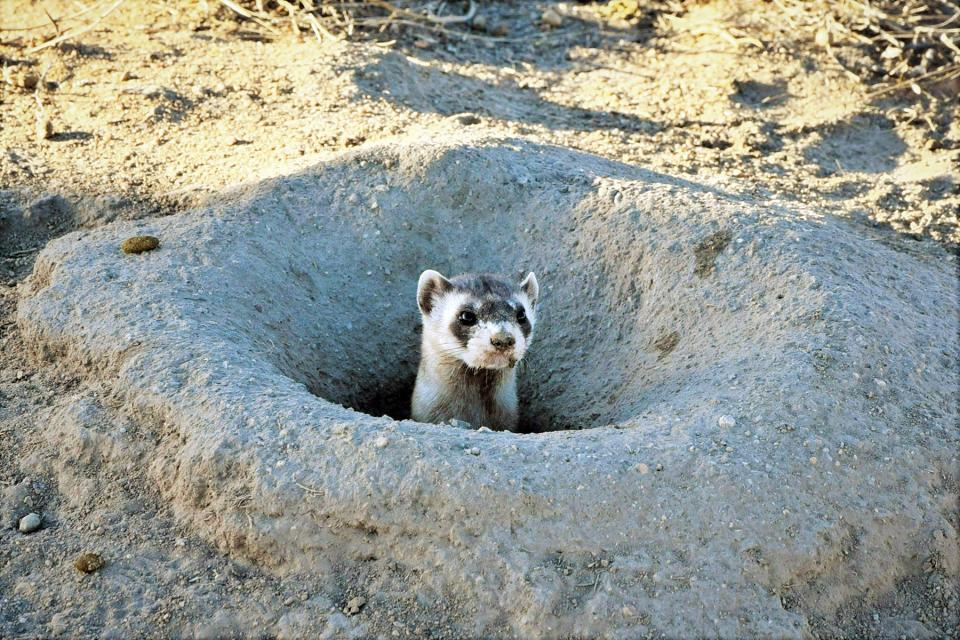U.S. Army Pueblo Chemical Depot joins the front lines of black-footed ferret conservation
Pueblo County's black-footed ferret population recently increased by 22 after members of the nation's most endangered mammal family were released at the Pueblo Chemical Depot.
The bred-in-captivity ferrets were released in a prairie dog colony on the sprawling depot property east of Pueblo where they will make the burrows their own and rely on prairie dogs for 90% of their diet. They join more than 125 black-footed ferrets who have been released on the Walker Ranch near Pueblo West.
Thanks to efforts of the U.S. Fish and Wildlife Service, which oversees the breeding program, Colorado Parks and Wildlife and many partner agencies, an estimated 605 black-footed ferrets are left in the world, about half of which are living in the wild, including 10 locations in Colorado.

The depot property became the 10th location on Nov. 15 when U.S. Army and Fish and Wildlife personnel freed 22 of the ferrets.
“Now that the Pueblo Chemical Depot munition storage mission is complete, we are transitioning our efforts to other projects for the military, the state of Colorado and the nation, like this release of the black-footed ferret,” said Col. Rodney McCutcheon, depot commander. “This is a historical event, and I’m glad I get a chance to be a part of it.”
After a bit of encouragement, most of the newly freed ferrets took a brief look around then quickly headed down the burrows to check out their new digs. Ferrets are mostly nocturnal, hunting and moving at night, and are rarely seen during the day.

How the ferrets nearly became extinct
The saga of the ferret species, which was once thought to be extinct, has a remarkable storyline. The last wild black-footed ferret was recorded near Buena Vista in 1943 and by 1979, the last captive ferret died, so the species was believed to be lost.
Miraculously in 1981, a small colony, or remnant population, of 129 ferrets was discovered on a Wyoming ranch. However, plague and canine distemper caused severe declines in their numbers. By 1986, fewer than two dozen survivors were trapped.
Thanks to a captive breeding program involving the U.S. Fish and Wildlife Service and zoos, seven of the surviving ferrets were able to breed.

Before release, ferrets have to display their ability to survive in the wild, preparation for which takes place at the National Black-Footed Ferret Conservation Center in Larimer County.
It is difficult for officials to track the ferrets' success because of their nocturnal nature, but the goal is to establish breeding pairs within the first year of release in hope that will carry on the species naturally, according to a depot press release.
Reintroduction efforts to date have involved substantial coordination and cooperation by many state, tribal, federal, and non-governmental partners such as local ranchers. The effort has included the U.S. Army, Pueblo Chemical Depot, PuebloPlex (the Depot’s local redevelopment authority), the U.S. Fish and Wildlife Service, U.S. Department of Agriculture, Natural Resource Conservation Service, CPW, Colorado State University Pueblo, and Eastern Illinois University.
“This definitely would not have happened without our partners,” said Rickey Jones, federal wildlife biologist. “It’s a true example of a conservation partnership at all levels including federal, state, county and even private landowners.”
To celebrate a decade of wildlife conservation work helping to restore the black-footed ferret, CPW has released an educational video documenting its history and the agency’s recovery efforts.
More ferret news: Endangered black-footed ferrets continuing epic comeback with help from Pueblo sites
Chieftain reporter Tracy Harmon covers business news. She can be reached by email at tharmon@chieftain.com or via X, formerly Twitter, at twitter.com/tracywumps. Support local news, subscribe to The Pueblo Chieftain at subscribe.chieftain.com.
This article originally appeared on The Pueblo Chieftain: Pueblo Depot is new home to 22 endangered black-footed ferrets

